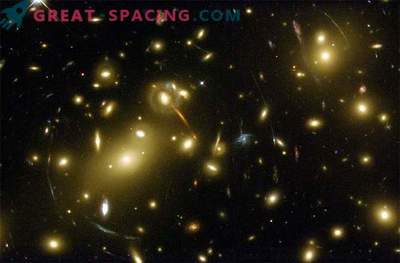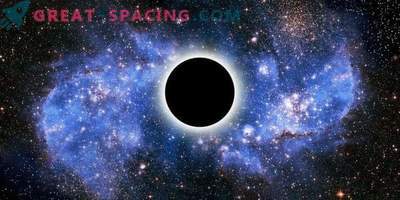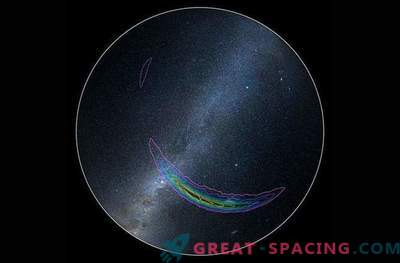
With the help of extremely high-precision measurements of a pulsar rotating around the orbit of the White Dwarf, astronomers discovered that the gravitational constant, which determines the force of gravity, is “encouragingly constant” in the entire Universe.
It has long been believed that the gravitational constant (or simply "G") is the same in the entire Universe, just as the speed of light in a vacuum and Planck's constant are known universal constants. But how can we be sure of this?
In the past, scientists reflected the lasers from the moon to determine its distance to Earth, approaching the exact measurement of G. And now scientists, using the Green Bank radio telescope in West Virginia and the Arecibo observatory in Puerto Rico, examined the Solar system in detail and fixed steady flashes of radiation produced by a rotating neutron star or pulsar, which are thousands of light years distant.
Pulsars are a cosmic clock of our Universe. They are the ancient remains of large stars that went out, survived a supernova explosion, and now consist of very dense, degrading matter less than 32 km in diameter. Pulsars also have powerful magnetic fields that can generate extremely collimated rays of radio emission. Every time the pulsar rotates, the polar rays can be sent to the Earth, and recorded in the form of pulsations: just like a flash of a beacon flashes at a distance. For time measurement, this ripple is absolutely reference. Astronomers observe these objects as the most accurate timekeepers in the Universe, competing with the most advanced atomic clocks that we have on Earth.
Now, by studying one of the special pulsars called PSR J1713 + 0747, astronomers made the most accurate measurements of G outside the solar system.
“The supernatural constancy of these stellar remnants provided intriguing evidence that the fundamental force of gravity, the“ big G of physics, ”remains unchanged across space, says astronomer Weiwei Zhu, a former employee of the University of British Columbia in Canada, in a press release from NRAO. "This observation has important implications for cosmology and some fundamental forces of physics."
Zhu is the lead author of a new study published in the Astrophysical Journal.
PSR J1713 + 0747 is the ideal laboratory to study some of the most fundamental values of space, time and relativity. First, it has a unique wide orbit around a white dwarf. Pulsar takes 68 days to complete a full circle. It is also incredibly bright - one of the brightest known pulsars. As a double star, the system loses a very tiny amount of energy through gravitational waves - phenomena predicted by Einstein’s general theory of relativity.
Their wide and stable orbit means that this loss of energy, being extremely small, has little effect on the orbit of the pulsar, which makes it a prime target for any observation of gravity. (With a more compact orbit, more energy would be expended to separate from the system using gravitational waves, errors would be created in measurements of the characteristics of the pulsar orbit.) Thus, we can now accurately measure the gravitational character of this star system. Why is it important?
The double star system of the pulsar and the white dwarf is at a distance of 3750 light years from Earth, and the G value obtained after 21 years of radio observations almost completely coincides with the most accurate measurements of G obtained from our Solar System. Thus, it appears (at least in this test) that G is constant in the entire known universe.
“Gravity is the power that binds stars, planets and galaxies together,” said astronomer and co-author Scott Rhans of the National Radio Astronomy Observatory (NRAO). "Although it appears to be permanent on Earth, there are some theories in cosmology, in which it is assumed that gravity may change in another time or in other parts of the Universe."
"These results, new and old, allow us to confidently exclude the probability of the existence of" special "times or places with different gravitational behavior," said astronomer and co-author Ingrid Stairs, also from the University of British Columbia in Canada. "Theories of gravity, which differ from the general theory of relativity, often make such predictions, and we have put new frameworks on the parameters describing these theories."
"The gravitational constant is a fundamental constant of physics, so it is important to check this general assumption using objects in different places, times and conditions," added Zhu. "The fact that we see that gravity behaves in the same way, both in our solar system and in systems of distant stars, confirms that the gravitational constant is in fact universal." Interestingly, in the near future we will receive another “laboratory of the theory of relativity”, when the global program Event Horizon Telescope (EHT) starts to receive high-precision data, possibly by the end of this year.
EHT is a global interferometer of a distributed radio antenna recording data from a supermassive black hole in the center of our galaxy, known as Sagittarius A * (or Sgr A *). Astronomers are preparing for the first time to look into the strong gravity laboratory, which reveals the most extreme gravitational environment known to date, and potentially - opening physics beyond the general theory of relativity.
It is interesting to see if the value of G will remain constant even on the edge of Event Horizon ...











































